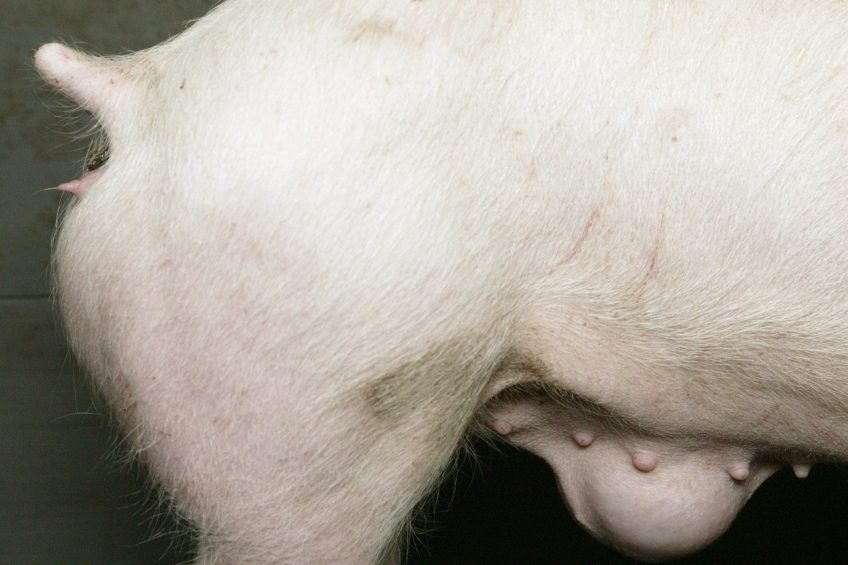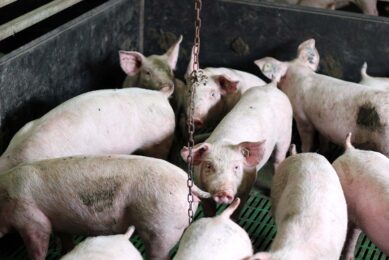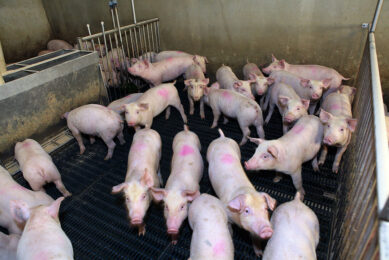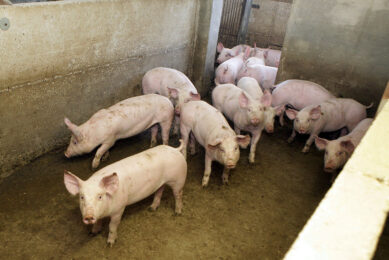Four good reasons to rethink genetic selection

Genetic selection has caused an ever-growing increase in the number of pigs born alive. However, other important factors in pig production are overlooked. This article lists 4 of them. Could it be time for a fundamental rethink?
For decades, average numbers of pigs born alive hovered around the 10.5 mark. Selection for prolificacy was not considered worthwhile, as the heritability values (h2) were considered too low (8–10%). Then French research in the 1960s and 1970s started looking at identifying subpopulations that demonstrated much higher than average numbers of pigs born alive and breeding up from these populations to create a “hyperprolific” line. In the late 1980s a consortium of four British breeding companies, together with the Animal Breeding Research Organisation at the Roslin Institute in Edinburgh, Scotland, imported a group of Meishan pigs from China which were very prolific and also very fat. Meishan genes found their way into some commercial hybrids in the 1990s.
Unravelling of pig DNA
In the mid-1990s, genetic selection was revolutionised with the unravelling of pig DNA and the identification of the genes responsible for prolificacy. Traditional phenotypic, quantitative selection was now complemented with genomic selection based on the sequencing of the nucleotides. All of this was made possible by giant steps in number-crunching capacity with more effective computing power and programs such as best linear unbiased prediction (BLUP).
Phenomenal progress
The rest is history. Nearly all the major genetic companies have made phenomenal progress in numbers born alive (see Table), and averages of 14–16 born alive are frequently seen on commercial farms. As average numbers born alive has increased, so the average birth weight has declined. There are many small, unviable pigs being born (below 800 grammes).
 Pre-weaning mortality
Pre-weaning mortality
Professor George Foxcroft at the University of Alberta has carried out a lot of research into the phenomena of intrauterine growth retardation (IUGR). Pigs that are small at birth remain small at weaning. As a rule of thumb, a pig weighing 100g less than the litter average at weaning will weigh 1 kilogramme less at the end of their stay in the grower section. Later the pig will weigh 10–15 kg less at the end of the finishing period. In an all-in, all-out system, this means either downgraded pigs at the slaughterhouse, or longer times to close out the finisher site.
Selection pressure on numbers born alive
Still, many breeding companies continue to exert selection pressure on numbers born alive. The more far-sighted companies are now looking at selection of “pigs alive on day 5” (LP5). Growing pressure from well-funded and well-informed animal welfare groups is also putting pressure on governments, which sometimes is transformed into legislation. In 2010, the Danish parliament discussed the ethics of rapid genetic progress in numbers born alive, while declaring national figures of 20% pre-weaning mortality. This was followed by a project report by the Danish Centre for Bioethics and Risk Assessment.
Motions
In the Netherlands, the Partij voor de Dieren (Animal Party), tabled a motion in January 2019 asking for legislation to end breeding for higher numbers born and increased number of teats. That was rejected. The same party tabled another 2 motions asking the government to define a 5-year plan to reduce pre-weaning mortality to be lower than 10%. This was approved. Yet another motion was tabled in December 2019 to forbid the breeding of sows with litter sizes larger than 12. This was rejected.
 Back fat and pork flavour
Back fat and pork flavour
The heritability (h2) of back fat on ad libitum fed pigs has an average value of 0.49 (range 0.12–0.74). As a result, it has been relatively easy to slim down the pig carcass with traditional quantitative selection. Other techniques, such as the inclusion of the very lean Pietrain breed as a terminal sire either pure bred, or part of the make-up of a synthetic terminal sire line, has contributed to the production of very lean pigs.
At the same time, the heritability of various meat quality traits such as tenderness, drip loss, pH, colour, flavour and juiciness has been calculated by the meat scientists. In general terms, there is a strong negative correlation between all eating quality traits and carcass leanness.
Modern pig carcasses in the weight range of 90–105 kg with a P2 back fat cover of 11–13 mm will nearly always have a lean, tough and almost tasteless pork. Modern chefs are always looking at ways to make pork more interesting because it developing a reputation for being tasteless.
The Duroc breed is rapidly gaining in popularity as a terminal sire, as its progeny will high a higher level of intramuscular fat or marbling, which helps to improve the flavour of the pork. In spite of all the bad press about pork flavour, selection pressure is still being applied to backfat.
 The cost of lameness
The cost of lameness
The old English equine expression, “no foot, no horse”, could quite equally be applied to boars standing at AI studs. In a study of 44 North American studs, 81% of the studs rated feet and legs as a primary reason for culling.
Terminal boars in traditional AI systems will potentially sire some 15,000 slaughter generation pigs. Recently it was reported that in the USA lameness is a cause of over 9% of the mortality in finishing barns, and prevalence can be as high as 34%. A GP boar will sire some 3,000 breeding gilts, who will in turn produce 150,000 slaughter generation pigs. Yet, how often are boars considered acceptable with less than optimal foot conformation, because of availability or because the genetic supplier insists on the boar’s superior genetic merit?
A higher reject rate on foot and leg quality of the boars, while they are still in quarantine, will send a clear message to the genetic supplier as well as reducing the costly problem of lameness in the finishing herd.
In 1988, Max F. Rothschild of Iowa State University showed significant (p<0.01) improvement in just 5 generations of selection for front leg structure in duroc, with a scoring procedure involving 3,598 pigs. he noted heritability (h2) of 0.29.>
 Hernias and other genetic defects
Hernias and other genetic defects
Back in the early 1980s, when a litter was born with any genetic defect (hernia, splay leg, etc.), the whole litter was identified, not put onto performance test at 30 kg and sold as weaner pigs. This drastic method ensured that there was no transmission of undesirable genes.
Today, things have changed (for the worse). All genetic companies are obsessed with the highest possible test numbers to improve their famous “immature-to-total” (I/T) ratio, a measure of genetic progress. They feel that discarding a whole litter will potentially lose them their good ratio.
The result is that it is very common to encounter levels of 2–3% of hernias in the slaughter generation stock. These inevitably end up as early culls. From a welfare point of view, in the EU, pigs with hernias that have a diameter of more than 20 cm cannot be transported to a slaughterhouse. That means even more on-farm euthanasia, which is an unpleasant job for farm staff and involves extra costs for carcass disposal.
In recent years, nighttime illegal incursions into integrated company farms in Spain, where pigs with hernias were photographed, resulted in TV exposure that caused serious damage to the company’s sales of pig meat and product recalls from the supermarkets. All breeding companies need to try to address that growing problem.
References available on request.
 Beheer
Beheer









 WP Admin
WP Admin  Bewerk bericht
Bewerk bericht